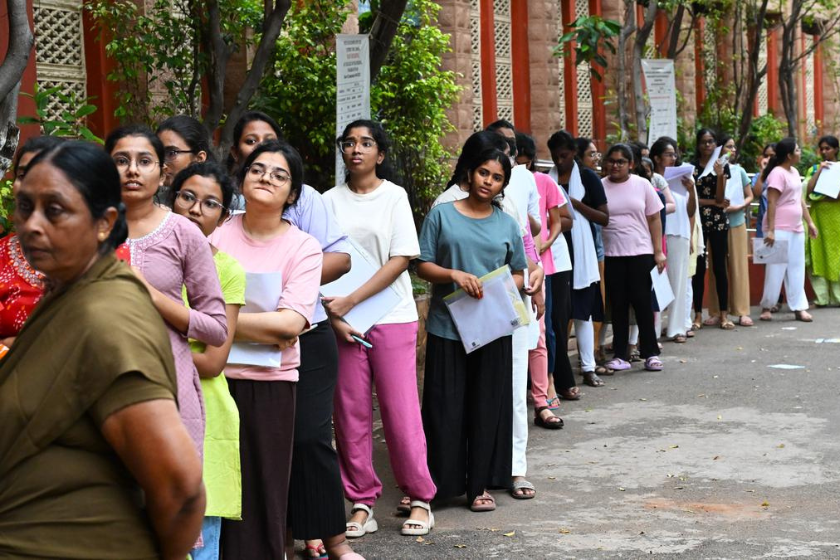NEET UG 2025 presents candidates with more difficult questions, says experts
The NTA raised the bar for analytical and application-oriented learning by only releasing four sets of papers instead of the customary twenty-four, and each set featured a consistently more challenging format.

On Sunday, May 4, 2025, the National Testing Agency (NTA) administered the National Eligibility cum Entrance Test (NEET) UG 2025. 22.7 lakh students enrolled for the test at 5,453 locations in more than 500 cities.
NEET 2025 took place in a single shift from 2:00 to 5:00 p.m. According to experts, the NTA raised the bar for analytical and application-oriented learning by only releasing four sets of papers instead of the customary twenty-four, and each set had a uniformly more challenging format.
The questions in the biology portion were conceptual in nature and intended to evaluate comprehension rather than recollection, even if they were in line with the National Council of Educational Research and Training. Candidates characterized the chemistry and physics sections as challenging, with many steps, laborious computations, and situation-based reasoning. According to Nitin Vijay, CEO and founder of Motion Education, “many students reported that time management became a hurdle due to the complex nature of the Physics problems, especially in topics like Modern Physics, Electrodynamics, and Thermodynamics.”
When the NTA became involved in a paper leak controversy concerning NEET UG 2024, it redesigned its security and vigilance systems.
In India, NEET UG is the only test used to select applicants for undergraduate medical programs. Up to 24,06,079 individuals registered for NEET UG in 2024, compared to 20,87,462 in 2023. There were 18,72,343, 16,14,777, 15,97,435 and 15,19,375 registered candidates for NEET UG in 2022, 2021, 2020, and 2019, respectively.
Academic quarters claim that this exam peak is probably an effort by the NTA to raise the selection standards for medical school.
The philosophy of NEET 2025 has clearly changed; memorization of textbook passages is no longer the focus. At the entrance gate, the paper demanded maturity, mental clarity, and the capacity to think like a doctor. The goal seems to be to create more skilled, analytically capable medical personnel who can adapt to a healthcare environment that is changing more and more. Mr. Vijay stated, “The paper required a deep conceptual understanding and excellent problem-solving skills.”
According to experts, the Physics section could have an effect on this year’s total cutoffs, particularly for prestigious government medical schools.
“Some JEE-level questions were asked in Physics, and the numericals in Chemistry were challenging, not formula-based, and above NCERT level,” stated Keshav Agarwal, founder of the non-profit Educator Society of India.
“Now, all eyes are on Sikar, where 17% of students scored 600+ last year, compared to the national average of 2%-3%,” Mr. Agarwal continued.
According to Mr. Agarwal, 29,000 students achieved 600+ in 2023, while 81,000 students achieved 600+ in 2024.


